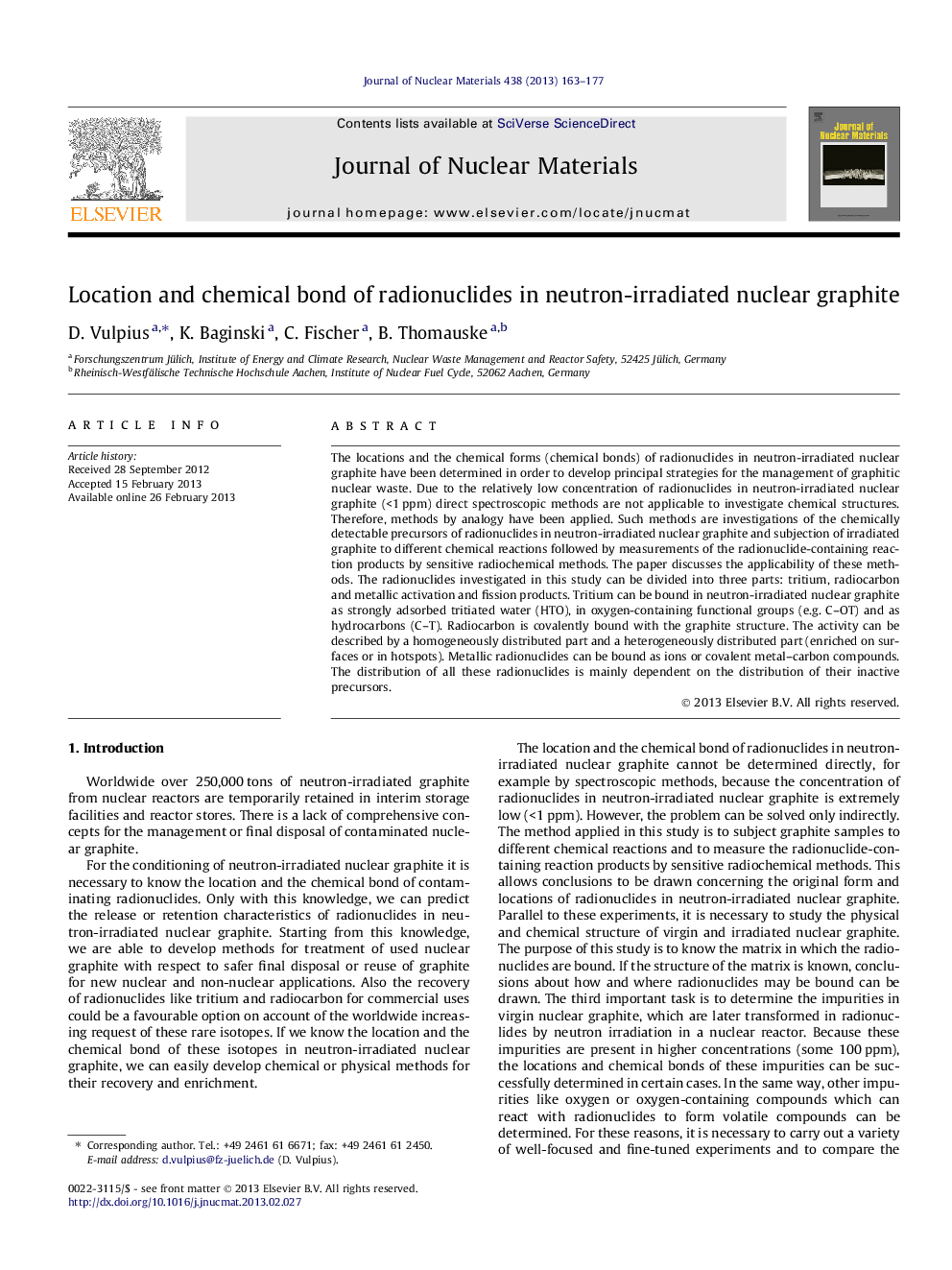| Article ID | Journal | Published Year | Pages | File Type |
|---|---|---|---|---|
| 1565740 | Journal of Nuclear Materials | 2013 | 15 Pages |
Abstract
The locations and the chemical forms (chemical bonds) of radionuclides in neutron-irradiated nuclear graphite have been determined in order to develop principal strategies for the management of graphitic nuclear waste. Due to the relatively low concentration of radionuclides in neutron-irradiated nuclear graphite (<1Â ppm) direct spectroscopic methods are not applicable to investigate chemical structures. Therefore, methods by analogy have been applied. Such methods are investigations of the chemically detectable precursors of radionuclides in neutron-irradiated nuclear graphite and subjection of irradiated graphite to different chemical reactions followed by measurements of the radionuclide-containing reaction products by sensitive radiochemical methods. The paper discusses the applicability of these methods. The radionuclides investigated in this study can be divided into three parts: tritium, radiocarbon and metallic activation and fission products. Tritium can be bound in neutron-irradiated nuclear graphite as strongly adsorbed tritiated water (HTO), in oxygen-containing functional groups (e.g. C-OT) and as hydrocarbons (C-T). Radiocarbon is covalently bound with the graphite structure. The activity can be described by a homogeneously distributed part and a heterogeneously distributed part (enriched on surfaces or in hotspots). Metallic radionuclides can be bound as ions or covalent metal-carbon compounds. The distribution of all these radionuclides is mainly dependent on the distribution of their inactive precursors.
Related Topics
Physical Sciences and Engineering
Energy
Nuclear Energy and Engineering
Authors
D. Vulpius, K. Baginski, C. Fischer, B. Thomauske,
